Paris celebrated the US soldiers, French Resistance fighters and others who liberated the City of Light from Nazi occupation 75 years ago on Sunday, unleashing an eruption of kissing, dancing, tears and gratitude.
Firefighters unfurled a huge French flag from the Eiffel Tower, recreating the moment when a French tricolor stitched together from sheets was hoisted atop the monument 75 years ago to replace the swastika flag that had flown for four years.
Dozens of World War II-era jeeps, armored vehicles, motorcycles and trucks and people dressed in wartime uniforms and dresses paraded through southern Paris, retracing the entry of French and US tanks into the city on Aug. 25, 1944.
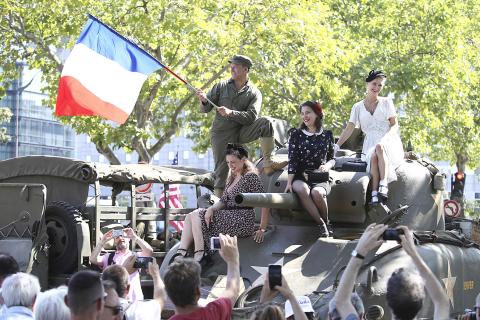
Photo: AP
Among those watching the parade was Roger Acher, 96, one of the few surviving veterans, who entered Paris with French general Philippe Leclerc de Hauteclocque’s 2nd Armored Division at about dawn that day.
Fighting was fierce as they moved toward the city, he said.
“I almost got killed,” Acher added.
A Dixieland band standing on an army truck played at the end of the parade, which wrapped up at the site of a new museum about the liberation and the French Resistance.
Long the jewel of European cities, Paris suffered relatively little damage in World War II, but its residents were humiliated, hungry and mistrustful after 50 months under the Nazis.
The liberation of Paris was both joyous and chaotic.
It was faster and easier for the Allies than their protracted battle through Normandy and its gun-filled hedgerows.
However, the fight for the French capital killed nearly 5,000 people, including Parisian civilians, German troops and members of the French Resistance whose sabotage and attacks had prepared the city for the liberation.
After invading in 1940, the Nazi hierarchy ensconced themselves in Paris’ luxury hotels, and hobnobbed at theaters and fine restaurants.
Collaborationist militias kept order and French police were complicit in the most dastardly act of the Occupation: the 1942 roundup of about 13,000 Jews at the Vel d’Hiv bicycle stadium before their eventual deportation to the Auschwitz death camp in German-occupied Poland.
The D-Day landings on June 6, 1944, helped change the tide of the war, allowing the Allies to push through Normandy and beyond to other German-occupied lands around Western Europe.
The message went out to the French Resistance in Paris that the Allies were advancing.
Resistance member Madeleine Riffaud, now 95, described to reporters killing a Nazi soldier on July 23, 1944, on a Paris bridge.
Riffaud was spotted as she escaped on her bicycle, arrested, tortured and jailed before being freed in a prisoner exchange days before the liberation of the city.
Seventy-five years later, she does not take the killing lightly.
“To carry out an action like that isn’t playing with dolls,” she said.
On Aug. 19, 1944, Paris police officers rebelled and took over police headquarters.
On the night of Aug. 24, the first Allied troops entered southern Paris.
The grand entrance of Leclerc’s 2nd Armored Division followed by Allied forces would come the following day.
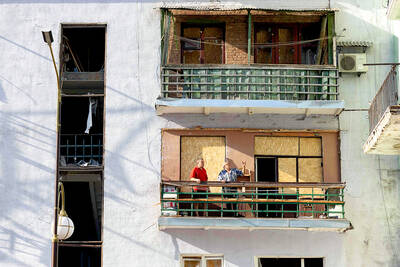
DEADLOCK: Putin has vowed to continue fighting unless Ukraine cedes more land, while talks have been paused with no immediate results expected, the Kremlin said Russia on Friday said that peace talks with Kyiv were on “pause” as Ukrainian President Volodymyr Zelenskiy warned that Russian President Vladimir Putin still wanted to capture the whole of Ukraine. Meanwhile, US President Donald Trump said that he was running out of patience with Putin, and the NATO alliance said it would bolster its eastern front after Russian drones were shot down in Polish airspace this week. The latest blow to faltering diplomacy came as Russia’s army staged major military drills with its key ally Belarus. Despite Trump forcing the warring sides to hold direct talks and hosting Putin in Alaska, there
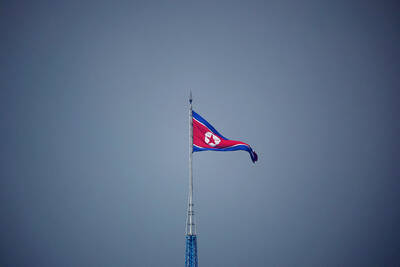
North Korea has executed people for watching or distributing foreign television shows, including popular South Korean dramas, as part of an intensifying crackdown on personal freedoms, a UN human rights report said on Friday. Surveillance has grown more pervasive since 2014 with the help of new technologies, while punishments have become harsher — including the introduction of the death penalty for offences such as sharing foreign TV dramas, the report said. The curbs make North Korea the most restrictive country in the world, said the 14-page UN report, which was based on interviews with more than 300 witnesses and victims who had
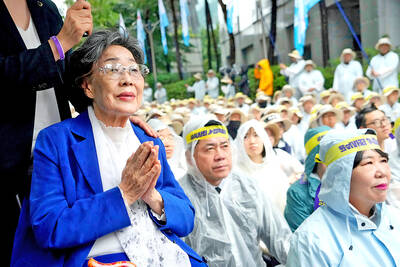
COMFORT WOMEN CLASH: Japan has strongly rejected South Korean court rulings ordering the government to provide reparations to Korean victims of sexual slavery The Japanese government yesterday defended its stance on wartime sexual slavery and described South Korean court rulings ordering Japanese compensation as violations of international law, after UN investigators criticized Tokyo for failing to ensure truth-finding and reparations for the victims. In its own response to UN human rights rapporteurs, South Korea called on Japan to “squarely face up to our painful history” and cited how Tokyo’s refusal to comply with court orders have denied the victims payment. The statements underscored how the two Asian US allies still hold key differences on the issue, even as they pause their on-and-off disputes over historical
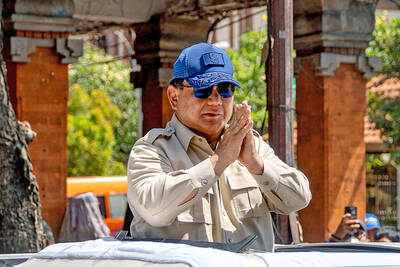
CONSOLIDATION: The Indonesian president has used the moment to replace figures from former president Jokowi’s tenure with loyal allies In removing Indonesia’s finance minister and U-turning on protester demands, the leader of Southeast Asia’s biggest economy is scrambling to restore public trust while seizing a chance to install loyalists after deadly riots last month, experts say. Demonstrations that were sparked by low wages, unemployment and anger over lawmakers’ lavish perks grew after footage spread of a paramilitary police vehicle running over a delivery motorcycle driver. The ensuing riots, which rights groups say left at least 10 dead and hundreds detained, were the biggest of Indonesian President Prabowo Subianto’s term, and the ex-general is now calling on the public to restore their